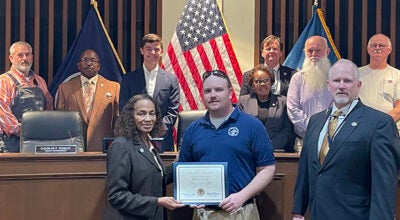Reference guide of poisonous plants available
Published 3:51 pm Friday, January 29, 2021
|
Getting your Trinity Audio player ready...
|
Because of the COVID-19 pandemic, people are spending more time outdoors. The pandemic has also sparked an increased interest in foraging for wild foods. This can lead to accidentally eating something poisonous.
The Blue Ridge Poison Center at the University of Virginia Health announces the publication of a reference guide to poisonous plants native to Virginia. It is now available on their website: https:// med.virginia.edu/brpc/the-learning-center/the-socrates-project/
The publication, “The Socrates Project: Poisonous Plants in Virginia” (second edition), is a collaboration between the Virginia Master Naturalist Program — a statewide corps of volunteers providing education, outreach, and service dedicated to the beneficial management of natural resources and natural areas within their communities — the Blue Ridge Poison Center at University of Virginia Health, and the University of Virginia School of Medicine’s Division of Medical Toxicology – Department of Emergency Medicine.
The project was initiated in 2013 when members of the Old Rag Chapter of the Virginia Master Naturalist program learned that hundreds of exposures to poisonous plants are reported annually to the Blue Ridge Poison Center, which serves 54 counties of Central and Southwest Virginia and the entire Shenandoah Valley. Exposures commonly happen to young children who may be attracted to plants found growing outdoors.
“Our experts become quickly concerned when they receive a PoisonHelp hotline call about someone who has intentionally eaten a plant they harvested from the wild,” Dr. Christopher Holstege, medical director of the Blue Ridge Poison Center and toxicology consultant on the project, said.



